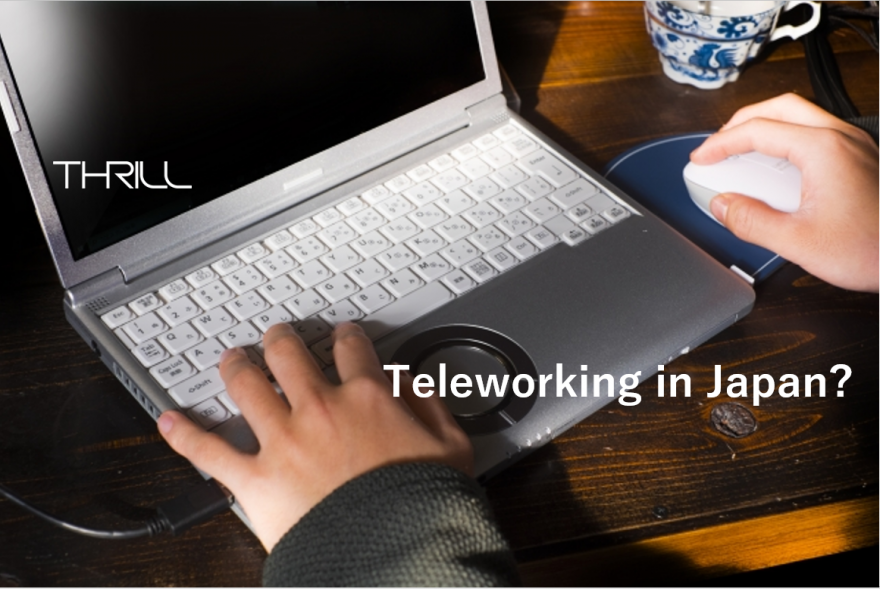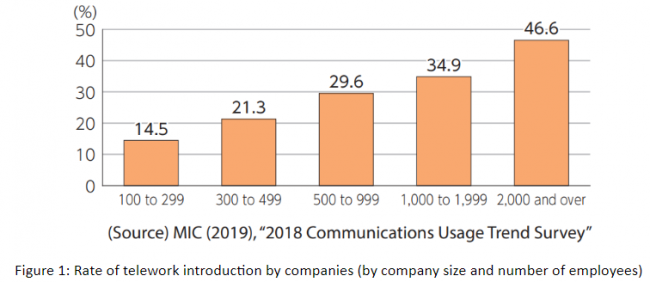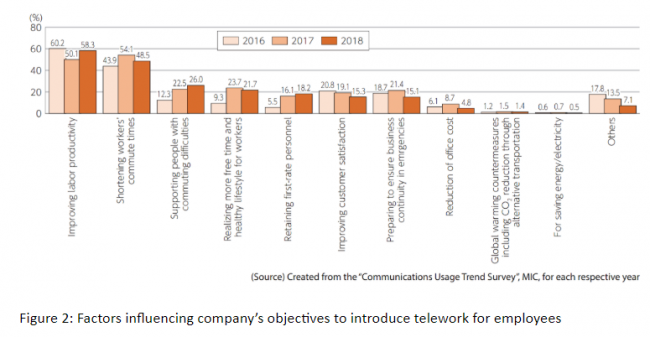 コラム
コラム
Teleworking in Japan?

Are you on business continuity plan (BCP) via remote working?
It is a considerate action plan you’ve taken while everyone battles to get clear of the virus. Telecommuting is now integrated with everyday lifestyle given current COVID-19 pandemic situation.
Even Japan has been seeing the impact from early February 2020. To prevent further spread within the country, the government has announced a temporary suspension of schools. This has led to many parents opting for remote working to be able to multi-task between parenting at home and doing their job.
Mr Abe, Prime Minister of Japan, has also advised the community to stay indoors and only go out if it is necessary. With new measures in place in Japan and in other countries, many businesses are converting to telework as part of BCP.
A recent whitepaper on information and communication (ICT) in Japan 2019, released interesting survey results on ‘New workstyles that uses ICT’ (page 23). This analysis provides a more in-depth understanding of the factors influencing teleworking in Japan before the announcement of pandemic COVID-19.
Here are the key highlights from the survey:
【1】Circa 13.9% of companies have introduced remote working as standard practice from 2018. This increased to 19.1% in 2019, illustrating that big-sized firms are primary adopters of this workstyle (Refer to figure 1). It introduces flexibility in working style and effectively manages time and location services through ICT. The three main types of telework include work from home, working via satellite offices and mobile work.

【2】The percentage of introducing remote working was surveyed in MIC (2019). The surveys from “Supporting people with commuting difficulties” and “Retaining first-rate personnel” showed that there is an upward trend in introducing teleworking. The benefits include work-life balance, maintaining a sufficient strength in the workforce during depopulation, contributing to regional revitalisation, and cost efficiency for organisations.

【3】My opinion on telework – it is an alternative option of workstyle in case of an emergency similar to our current worldwide situation. It is also an active style of working considering commuting time loss and improving business efficiency for 24/7 work contribution.
Through Figure 2, it is evident that ‘preparing to ensure business continuity in emergencies’ has dropped from 21.4% to 15.1% over three years. A similar pandemic or a similar incident to 2011 may potentially occur Japan again given its prime geographic location. And the percentages outlined in figure 2 are expected to rise in the 2020 survey.
To reiterate, there are three types of working styles – work from home, working at satellite offices, and mobile work. Out of all the three, I would recommend work from home as the ideal type when necessary. The remaining two styles are a support structure for a business, but it’s not an ideal setup for emergency planning. For those who need to access confidential information at work, a secured network will have to be configured on top of setting up work from home business plan.
Let’s wait and see what the next set of survey results tells us!
